What is the Best Way To Retrieve an Anchor?
The best way to retrieve your boat anchor is by positioning your boat almost directly above the anchor and pulling it up as close to straight as you are able to. Because of the way anchors work, the more of an angle there is between your boat and the anchor itself, the harder it will be to retrieve. However, straight up and down ensures the anchor has the least amount of holding power it can exert and therefore it is easier to pull from the water.
With that in mind, there are still a number of ways you can make retrieving an anchor easier for yourself, so let’s take a look at how it’s done and what might serve as the best way for you.
The Basic Method of Retrieving an Anchor
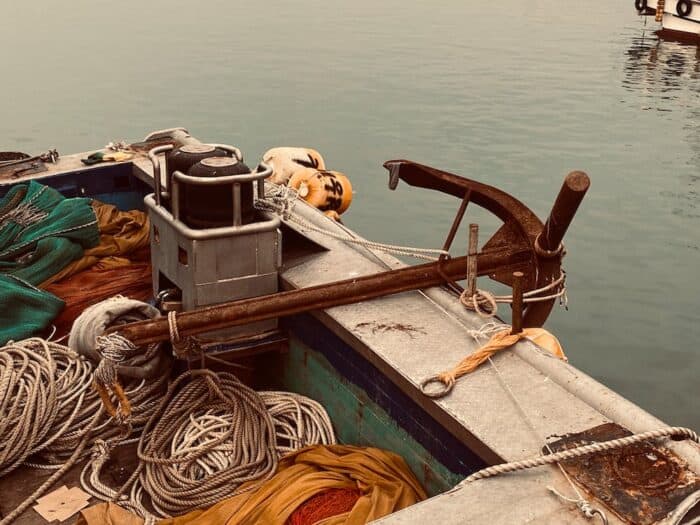
Without any frills or gimmicks, the surefire method of retrieving an anchor is also the oldest and simplest method. This is a decent way to pull your anchor from the position it’s wedged in.
- Start by positioning your vessel right over the anchor, called the anchor point, so that your anchor line is heading down from the boat in as close to a straight line at a 90 degree angle as possible. Approach where the anchor is slowly so you can pull in the extra line and wrap it around the cleat, pulling in all the excess until you’re in position.
- Secure the reeled in anchor line by wrapping it around that cleat. The boat’s forward motion may pull the anchor free but if it’s stuck you may need a little help. You’re waiting for a bow dip if the water has a bit of motion to it. When the boat dips, you tighten the line on the cleat so that when the bow rises again as the wave passes, the weight of the boat puts tension on the line and pops your anchor free.
- If the water is perfectly calm, you can cinch the line and then maneuver your vessel in a circle. The motion here will provide the same effect and ideally pop your anchor free from where it’s been lodged. This works with anything from plow anchors to a grapnel anchor.
- With a free anchor you can simply do the hand over hand method of pulling the anchor line up until the anchor is in your grasp and you can get it back into the boat.
Choose the Right Anchor Line
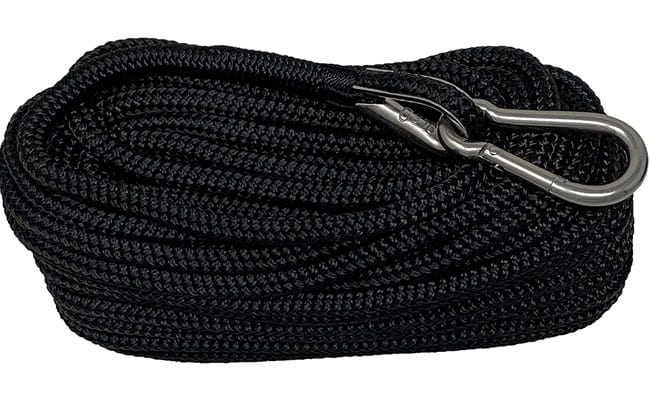
You’ll have a much easier time pulling in the anchor with the right anchor line. Nylon anchor rope has some give but it’s generally your best bet for anchor line and works well. It’s not too hard to pull in and you can get a good grip on it. Twisted ropes are usually not as good as braided ones and can get kinks making them harder to use and also potentially slimier or tangled up in weeds.
Chain is ideal for larger boats but on smaller vessels it’s a hassle to use nothing but chain. The weight is a concern and chain can more easily get wedged on rocks or debris below the surface, making pulling it back in an incredible ordeal.
Anchor Retrieval System and Windlass
There are several popular tools you may want to make use of to retrieve your anchor that are less stressful and will be less tiring as well. If you spend a lot of time boating it could be worth it to invest in these methods just to make it easier on yourself.
Electric Windlass
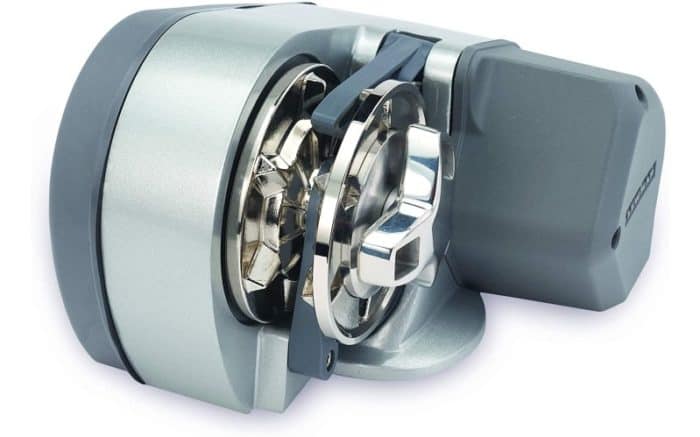
An electric windlass is a very convenient way to retrieve your anchor but it’s definitely better suited for a larger vessel just in terms of space required and also the potential investment. Compared to just hand over hand pulling, a windlass is a lot more expensive. That said, it can be more convenient and save you a lot of stress with heavier anchors.
If you’re an older boater or physically not in ideal condition to be yanking up anchors from the depths, a windlass can be a real lifesaver and allows you to keep enjoying your hobby. The same is true if you have a larger boat that would make trying to physically pull up a very heavy anchor too much of a chore.
Simple electric winches can go for just a couple hundred dollars while larger and more powerful windlasses can cost nearly $2,000 or more.
Hand Winch
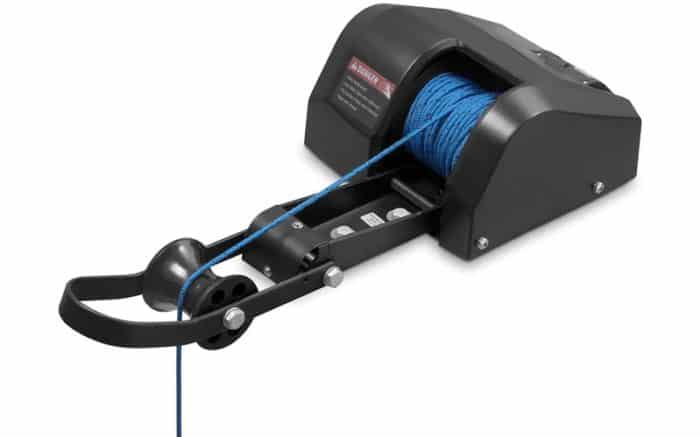
There are cheaper options that may be well suited for smaller boats including hand cranked winches that can help you reel in your anchor while still being a little less stressful than doing it hand over hand along the line. The other benefit to hand cranking winch or pulley is that you don’t get your hands messy either, which is definitely an upside.
You definitely need to be in better physical condition or have more strength to use this type of winch compared to electric, but it will still be easier on your arms and back.
Anchor Puller or Retrieval System
Something like an anchor puller works as a great anchor retrieval system if you don’t have an existing anchoring system and it’s less expensive than a more complex winch or windlass. If you’ve never seen one before, here’s a walkthrough explaining how one brand works.
A device like this is like a cuff and an anchor ball you attach to your anchor line, regardless of length. You could have hundreds of feet of line in the water already, it doesn’t matter. You attach the anchor puller to the line and ensure your buoy is attached to the anchor puller. The buoy keeps it afloat and you can then apply some power to get your boat moving. As the buoy and cuff combination are pulled along, the anchor line is forced to pull up because the buoy won’t let the anchor puller sink. The way the cuff works is that the anchor rode can pull up but it can’t go back down again.
Eventually the anchor puller will be brought right to the anchor and rest against your buoy and then you simply have to pull it into the boat. Very little physical effort is needed at all which makes it a great tool and it’s fairly simple as well, so it doesn’t take long to figure it out.
Some similar versions of this device like the anchor retrieval ring have been used by boaters for years and the can pull anchor safely and quickly with reliable results.
What if the Anchor is Stuck at the Anchor Point?
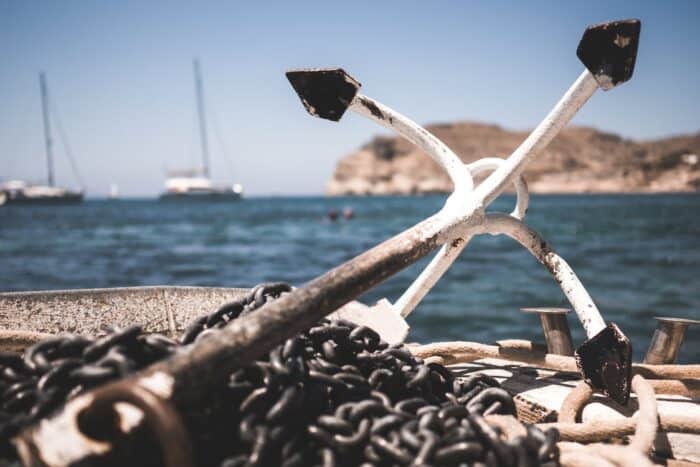
I mentioned a couple of methods you can use to pull out a snagged or fouled anchor like using a wave or going in a circle to free the anchor. If that doesn’t work, a device like the anchor puller can be a real helper and potentially free the anchor up because you’re using some forward thrust and propulsion to get it up off the sea bed. Of course, you may not have that puller available so there are just a few more options here.
You can try to cleat the anchor off at the stern of the boat – never do it from the bow – and give it some thrust. You never want your stern swinging around when you’re attached to a stuck anchor. You can give it a little thrust when cleated from the stern and see if it shakes the anchor loose.
If none of these methods have worked to free up your anchor then you may have to resort to some extreme measures. Though rare, sometimes an anchor can get badly wedged and nothing we do seems to pull it free. In those cases you may need to cut your losses which in this case would be literal.
You can use a good serrated knife and cut your line short and let the sea have it or you can tie it off with a buoy in the hopes of coming back to get it later.
If you do choose to cut the line and sacrifice the anchor, remember to cut it as short as possible. That loose line is a risk to other boaters and you don’t want it to get sucked up into someone’s prop which could cause serious damage as well as injury.
The Bottom Line
Pulling up an anchor is most easily done from right above the anchor itself with a simple hand over hand method of once you have the line secured on a cleat. If you have other tools at your disposal, things like a windlass, a winch or an anchor ring can also make this much simpler for you.
The proper technique should make it easy for you to retrieve any kind of anchor whether it be a plow anchor, mushroom anchor, fluke anchor or any other.
If you have an anchor stuck, make sure you secure the line to a cleat and make use of things like the boat’s forward momentum, the motion of the waves, or even a small amount of thrust to give the anchor that extra nudge it needs to come loose so you can pull it up.
Categories: Boats











